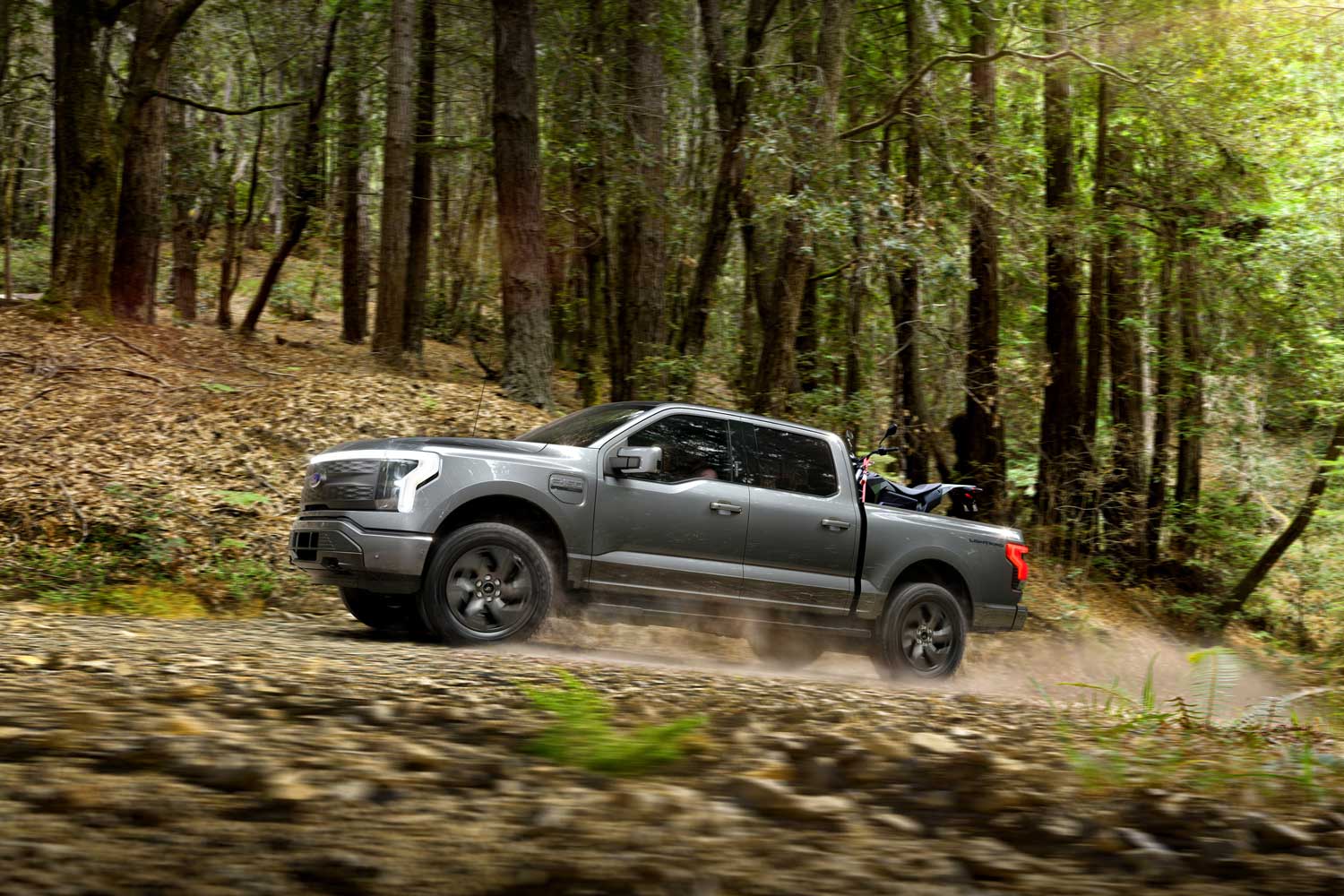How Does the EPA Calculate EV Range?
Range and MPGe help compare EV efficiency.
 Ford
Ford
Electric vehicle (EV) range is one of the key measurements that often drives shoppers from one vehicle to another. How exactly does the EPA calculate driving range, and should it be your top criteria when choosing a battery-powered automobile?
Two Main Driving Tests
Similar to how fuel efficiency is tested for gasoline and diesel-powered vehicles, the Environmental Protection Agency (EPA) determines the range of an electric car, truck, or SUV by running it through a series of tests, or 'schedules,' on a dynamometer that simulate real-world driving conditions.
There are two key tests in particular: the Urban Dynamometer Driving Schedule (UDDS), and the Highway Fuel Economy Test Driving Schedule (HWFET), which stand in for city and highway driving, respectively. Starting with a fully-charged battery, an electric vehicle sits overnight and is then run repeatedly through the UDDS until the battery is drained completely of energy. It is then charged again to run through the multiple HWFET tests until empty. The miles that the vehicle travels during each test serve as its initial range estimate for the highway and city driving cycles. It's also possible for automakers to choose a more complex series of driving cycles as an alternative when generating this number.
Why “initial?” The EPA recognizes that its tests are performed at room temperature in a laboratory, which can't account for the variety of weather and environmental conditions that EV drivers might encounter in the real world, and the agency considers that original mileage number artificially high as a result. The preliminary numbers are multiplied by 0.7 and then weighted for highway (55%) and city (45%) to achieve the official range number.
MPGe Is Important, Too
There's an important second step in the EPA range evaluation process. After an EV's battery is drained, it's charged back to 100% while a meter monitors exactly how much energy (measured in kilowatt-hours) is used. Those kilowatt-hours are divided by the mileage traveled during the test to reflect the energy used per mile of driving.
On the window sticker, however, the big number is MPGe (the “e” is for “equivalent”), while kilowatt-hour per 100 miles is listed in smaller print. The EPA considers one gallon of gasoline to be the energy equivalent of 33.7 kilowatt-hours of electricity: if a car uses 33.7 kilowatt-hours of electricity to travel 75 miles, then it receives a rating of 75 MPGe.
Comparing One EV To Another
Why is MPGe a more effective tool when comparing one EV's efficiency to another, rather than simply relying on range? EV range is typically a function of battery size, with larger, heavier vehicles able to accommodate bigger batteries that can store more energy. The Ford Lightning full-size truck, for example, can travel up to 320 miles on a single charge, versus the compact Chevrolet Bolt EV hatchback which offers 259 miles of range.
MPGe shows buyers the huge differential in efficiency between these two models, which is tied directly to the extra weight of the pickup. The Bolt EV is rated at 120 MPGe, while the Lightning manages no better than 70 MPGe. In terms of actual energy costs, the Chevrolet will cost almost half as much as the Lightning to drive the same distance.
Real World Variables
Remember, your real-world EV driving range might be greater or less than a vehicle's official EPA rating. Extreme heat and cold, hilly terrain, and higher cruising speeds can all impact how far an electric vehicle travels on a single charge. If you think of the window sticker as a guideline, rather than a guarantee, you'll have a better idea of how far your EV can travel on a full battery.
Written by humans.
Edited by humans.
 Benjamin Hunting
Benjamin HuntingNearly two decades into his career as an automotive journalist, Benjamin has had his hands greasy, his hair blown back, and his heart broken by more than one project car. In addition to his work at Capital One, he has contributed features and reviews to Motor Trend, Car and Driver, Hagerty, Driving Line, Inside Hook, Super Street, European Car, Roadkill Magazine, Motor 1, The Drive, the Toronto Star, the National Post, Business Insider, NAPA, Autoblog, Automotive News Canada, and AutoGuide. He is also cohost of the Unnamed Automotive Podcast and cocreator of the Code 45 and Dead Air graphic novels. In his spare time, he's a friend to vinyl and enjoys keeping the shiny side up during track days.
Related articles
View more related articles